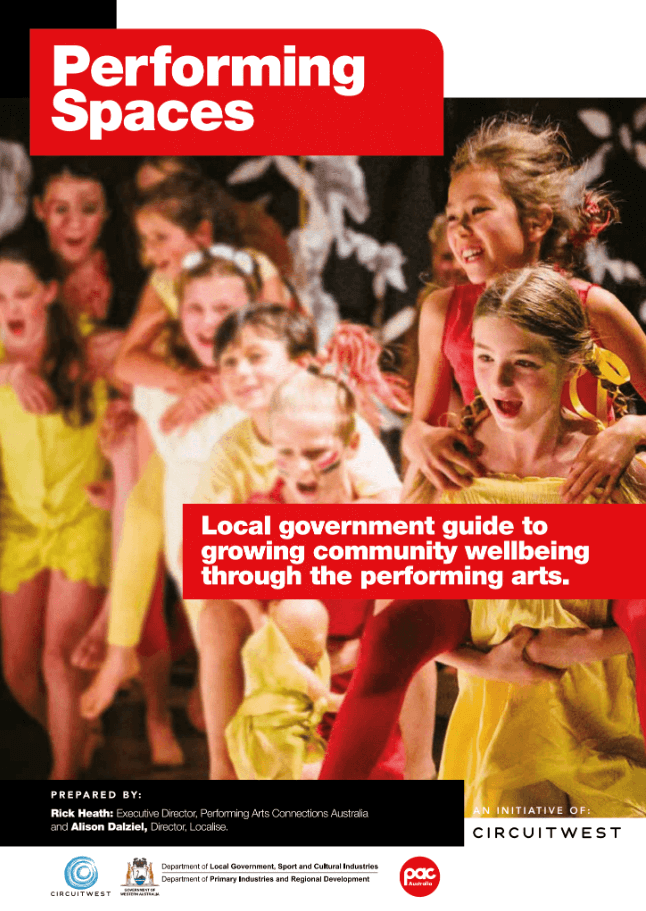Performing Spaces – A Guide for Local Governments
"Culture provides the colour, light and joy to communities; neglecting the cultural infrastructure impoverishes the spirit - inevitably having a negative impact on the socio-economic health and day-to-day well-being of the local populace."
Culture: Building Resilient Communities, The Edinburgh International Culture Summit 2016
Download the guide.
Guide to growing community wellbeing through the performing arts for local governments
Local government plays a pivotal role in building cohesive, liveable, prosperous communities. The performing arts has significant untapped potential as a natural enabler of those outcomes. Local government often holds the key to unlocking that potential. In the majority of cases, performing arts facilities are owned, funded at least in part, and often directly managed by local government. Our research tells us that local governments value their performing arts centres first and foremost as spaces that generate community wellbeing. They mention things like community cohesion, vibrancy and growing the local economy.
Yet there is very little guidance for local government in the governance, resource allocation and management decisions for performing arts facilities.
This guide was therefore commissioned by CircuitWest, primarily for local government senior management, to assist them to grow community wellbeing through their performing arts centres and facilities.”
Local government has evolved over a considerable period; modern local government is no longer just rates, roads and rubbish, and has a significant role in engaging with the community to plan for the future across a broad spectrum of economic, social and environmental wellbeing.
The performing arts sector has also changed over many decades, and radically over the last ten years. Arts centres are now seen as having a strong alignment with community building and benefits – a shift from a ‘home for the performing arts’ to a ‘place of innovation and learning.”
This resource can be downloaded here

